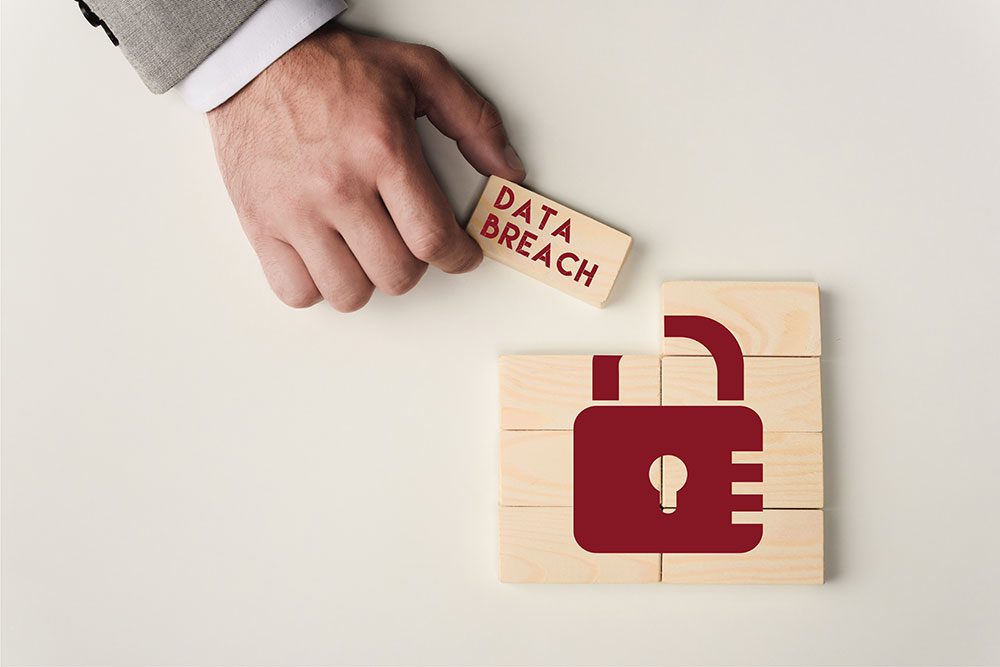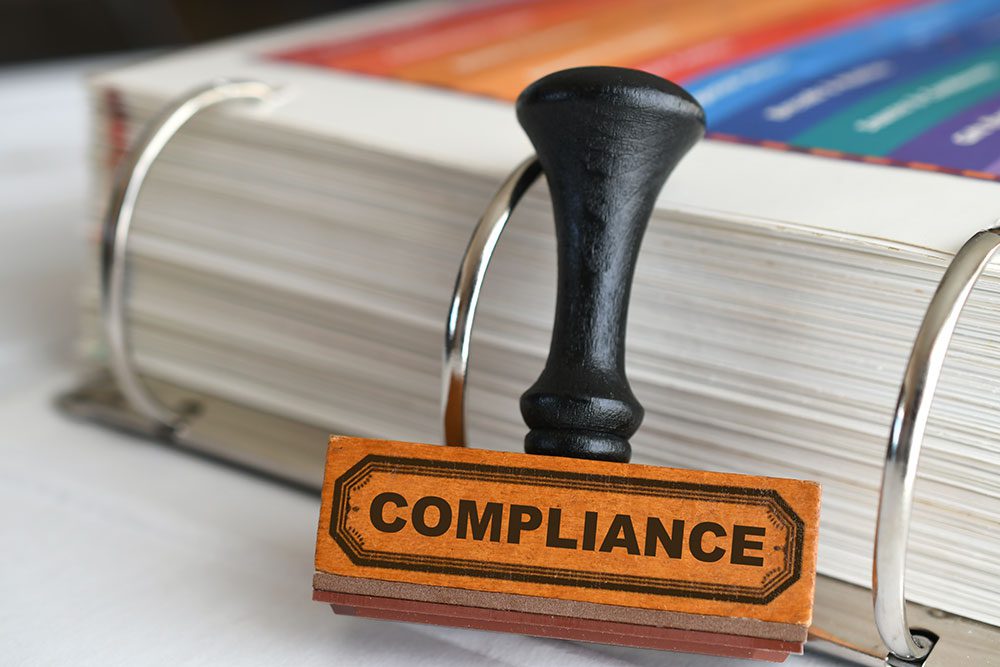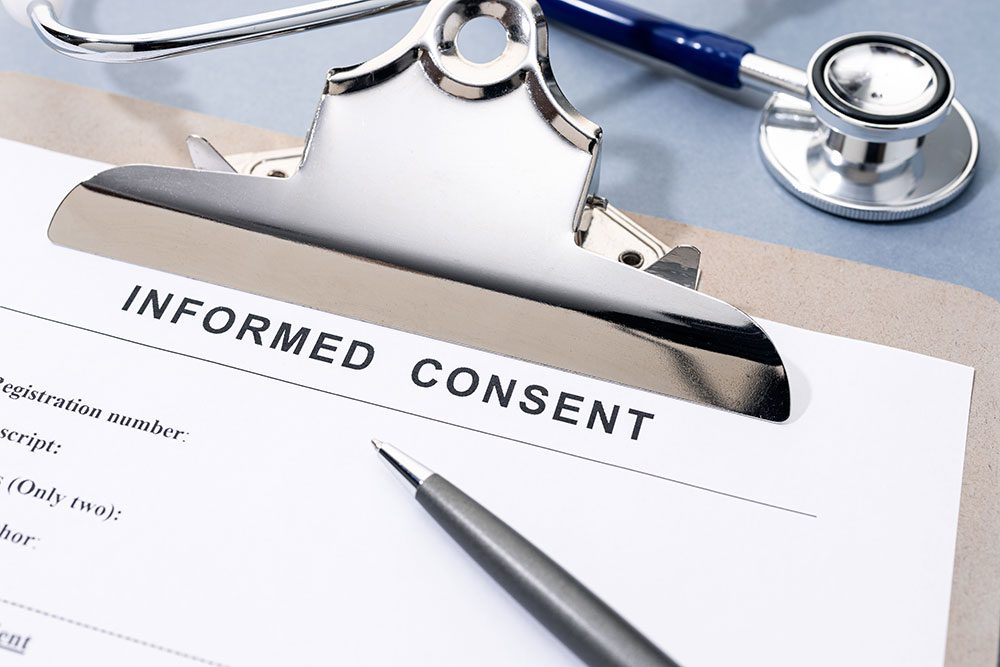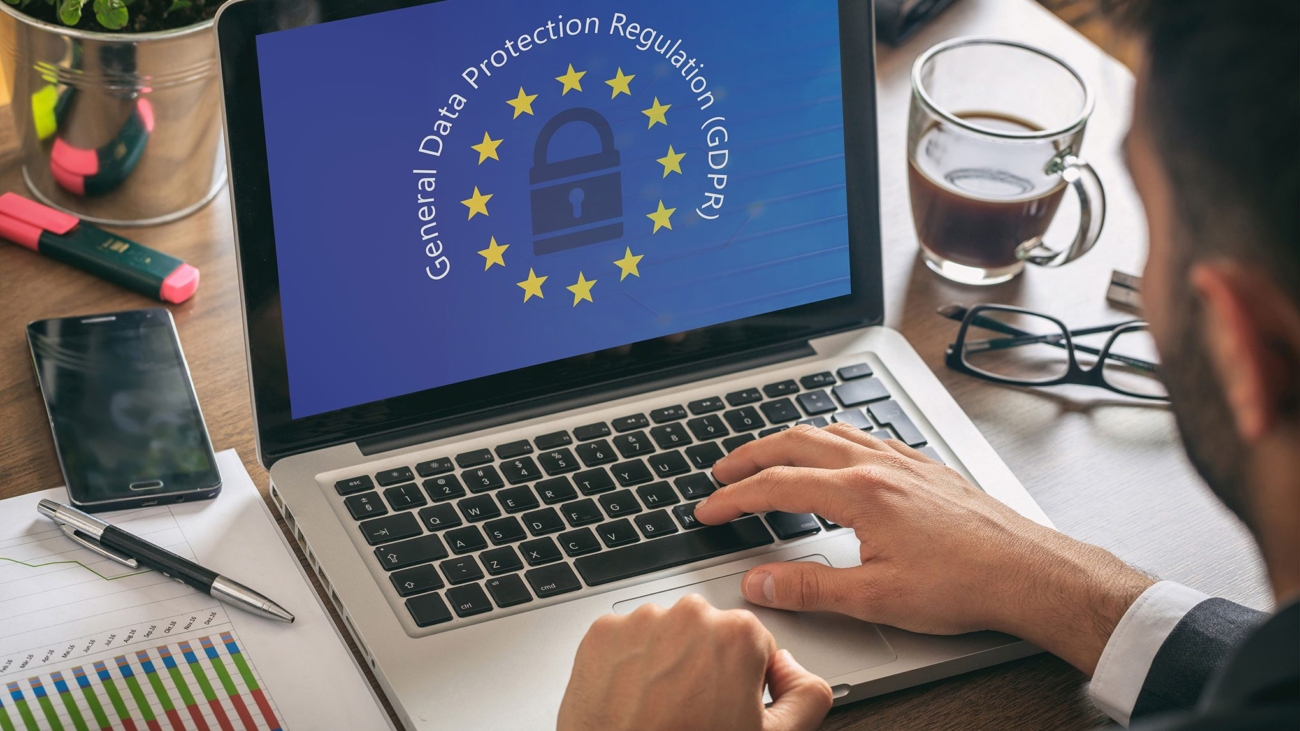7- Data Breach Notification Requirements
Businesses are subject to stringent requirements under the General Data Protection Regulation (GDPR) regarding how they respond to data breaches. By ensuring that people and regulatory bodies are notified as soon as personal data is compromised, these requirements aim to minimize risks as quickly as possible. To stay in compliance and stay out of serious trouble, businesses need to know what a data breach is, when to report it, and how to alert those who may be impacted.
What constitutes a data breach?
When personal information is accessed, misplaced, stolen, or revealed without the required consent, it is called a data breach. Cyberattacks, human error, or even the physical theft of devices holding private information are just a few of the ways that breaches can occur.
Typical reasons for data breaches include:
- Cyberattacks and hacking cybercriminals’ unauthorized access to company databases, which frequently results in the theft of private data like login credentials, financial information, or personal identifiers.
- Employee errors: Unintentional disclosure of personal information, such as when a worker sends a private email to the incorrect person.
- Devices Lost or Stolen: Unencrypted personal data on USB drives, laptops, or smartphones may be lost or stolen, potentially allowing unauthorized access.
- Insider Threats: Employees or contractors who purposefully leak, sell, or misuse personal information for monetary gain or other personal reasons are known as malicious insider threats.
Numerous forms of personal data, such as names, email addresses, passwords, financial information, and even private medical records, may be compromised. Regardless of whether it happens by accident or with malicious intent, any unauthorized disclosure, exposure, or loss of personal data is deemed a breach under the GDPR.

When and how businesses must report breaches to authorities?
Businesses must determine whether a data breach could have a detrimental effect on people’s security, privacy, or fundamental rights. If so, they must notify the relevant data protection authority of the breach as soon as possible.
A breach report needs to contain:
- a thorough description of the event, including its cause and timing.
- the kind and severity of the compromised data, as well as an evaluation of the possible dangers to those who may be impacted.
- actions done to minimize possible damage and contain the breach.
- planned actions to ensure improved security procedures are in place and stop future breaches.
Timely reporting of breaches enables regulators to evaluate the gravity of the situation and guarantee that companies take the necessary precautions to safeguard impacted parties. Businesses that want to manage incidents effectively should have a structured breach response plan that allows them to look into, record, and report breaches in accordance with GDPR regulations.
The 72-hour breach notification rule
According to GDPR, major data breaches must be reported to the appropriate regulatory body within a strict 72-hour period. Instead of starting when the breach actually happens, this countdown starts as soon as the company learns about it.
This rule’s urgency guarantees that security incidents are handled quickly, enabling regulators to keep an eye on the situation and advise companies on how to reduce damage. Companies are required to submit an initial report and provide further updates as new information becomes available if all the required information cannot be obtained in 72 hours.
Serious financial penalties, including fines of up to €10 million or 2% of a company’s global annual revenue, whichever is higher, may be imposed for failing to meet the 72-hour deadline. Businesses need to have strong monitoring in order to prevent such outcomes.

Notifying affected individuals
Businesses must promptly notify those affected when a data breach poses a high risk to the individuals involved, such as when passwords, financial information, medical records, or other sensitive data are compromised.
This alert is essential because it enables people to take preventative measures, like:
- To keep their online accounts safe, they change their passwords.
- Keeping an eye out for any illegal transactions in financial statements.
- Putting fraud alerts in place to stop identity theft.
The following must be included in a proper notification to those impacted:
- A detailed description of the breach, including what was compromised, when it happened, and what information was exposed.
- Possible dangers and repercussions: How the hack might impact people, including identity theft, financial fraud, or illegal account access.
- Suggested actions: Things people can do to safeguard their information and reduce risks.
- Contact information for additional help: How impacted parties can get in touch with the business for more information or support.
A business runs the risk of facing legal repercussions, harm to its reputation, and fines from the government if it does not notify impacted parties as soon as necessary. In the event of a breach, companies need to have a clear incident response plan that guarantees prompt and open communication.

8- GDPR and Marketing Compliance
One of the strictest privacy regulations in the world, the General Data Protection Regulation (GDPR) was created to safeguard people’s personal information and control how companies gather, store, and use it—especially when it comes to marketing. Regardless of the company’s location, any business that handles the personal data of EU citizens is subject to the GDPR, which is enforced by the EU.
GDPR compliance is essential for companies using digital marketing since noncompliance can lead to hefty fines, legal repercussions, and harm to one’s reputation. Key tenets of the regulation include accountability, transparency, and individual control over personal information. Before collecting or using personal data for promotional purposes, businesses must make sure they prioritize user privacy, use ethical marketing techniques, and get express consent.
Under GDPR, marketing must take a holistic approach to user consent, data protection, and privacy transparency. In addition to telling users how their data will be used, organizations need to give them easy ways to manage their preferences. In order to comply with legal requirements, this entails integrating privacy-centric designs into websites, marketing campaigns, and advertising strategies.
Email Marketing and GDPR
One popular tactic for reaching customers and promoting products is email marketing. Strict rules have been put in place by GDPR, though, to stop unsolicited marketing emails and make sure that recipients have given their consent.
Businesses must get people’s express and informed consent under GDPR before sending them marketing emails. This implies that users are not automatically subscribed to promotional messages; instead, they must voluntarily opt in. Under GDPR, pre-checked boxes, ambiguous consent forms, or bundled terms and conditions are deemed non-compliant. To maintain transparency, organizations must instead use distinct and unambiguous consent requests.
Businesses must also make it simple and easy for recipients to unsubscribe at any time. An unsubscribe link that enables users to easily opt out should be included in every marketing email. In order to ensure that people are not contacted after they withdraw their consent, organizations must process these opt-out requests as soon as possible.
Serious repercussions may result from noncompliance with GDPR email marketing regulations, including heavy fines of up to €20 million or 4% of a company’s yearly global turnover, whichever is higher. In the event that they are asked to prove compliance during audits or investigations, businesses should keep thorough records of consent, including the date and method of consent acquisition.

Cookies and Tracking Technologies (GDPR & ePrivacy Directive)
Cookies and online tracking technologies are another important component of GDPR compliance. Websites frequently use these tools to gather information about user interactions, preferences, and behavior. Together with the ePrivacy Directive, also known as the “Cookie Law,” GDPR mandates that companies get users’ express consent before using cookies or other tracking technologies.
Websites must have an easy-to-use cookie consent form that tells users in detail what kinds of cookies are being used. A pop-up or banner requesting consent to cookies should clearly say:
- The various types of cookies that are being used, such as marketing, functional, analytical, and essential cookies.
- The function of every kind of cookie, such as delivering targeted advertisements, enhancing website functionality, or tracking user behavior.
- The ability for users to change their preferences or reject cookies that are not necessary.
Crucially, users must always have the option to change or revoke their consent to cookies. GDPR compliance requirements are not met by merely informing users about cookie usage without providing them with control over their preferences. For the sake of accountability, businesses must use clear cookie settings and keep accurate records of user consent.
How GDPR Affects Social Media Advertising
Digital marketing has been transformed by social media platforms, which enable companies to connect with highly specific audiences based on user demographics, interests, and online activity. Strict rules brought about by GDPR, however, restrict how advertisers gather and use personal information for targeted advertising.
The following compliance guidelines must be followed by companies that use social media for marketing:
- Prior to using user data for targeted advertising, get their consent. This implies that instead of being tracked automatically, people must voluntarily opt in.
- Be open and honest about the ways in which personal information is gathered, used, and distributed for marketing. Clear privacy policies should specify the kinds of information gathered and how it will be used.
- Give consumers authority over their preferred forms of advertising. People should be able to change their preferences, ask for their data to be deleted, or opt out of targeted advertisements.
- Give consumers authority over their preferred forms of advertising. People should be able to change their preferences, ask for their data to be deleted, or opt out of targeted advertisements.
Businesses that gather data directly from users—for example, through lead generation forms or social media contests—must make sure they have legitimate consent procedures in place, even though many social media platforms, including Facebook, Instagram, and LinkedIn, offer privacy settings that let users change their ad preferences. This entails obtaining explicit consent, providing users with clear information about data usage, and enabling them to withdraw consent at any moment.

Obtaining and Managing Explicit Consent
Only with the express consent of the user may personal data be processed, which is one of the core requirements of GDPR. Free, explicit, informed, and unambiguous consent is required. This means that companies cannot get user approval by using pre-checked boxes, ambiguous language, or implied consent.
An individual’s agreement must fulfill the following requirements in order to be deemed valid consent:
- Freely given: Consent shouldn’t be required of users in order to use a service.
- Unambiguous: A clear affirmative action, like checking a box or pressing an acceptance button, is required to obtain consent.
- Informed: Users must be given concise, easily comprehensible information about the use and storage of their data, as well as what they are consenting to.
GDPR also requires companies to make it simple and convenient for customers to revoke their consent at any time. Businesses must provide easily accessible tools that allow people to withdraw their consent, like unsubscribe links, account settings, or privacy dashboards.
Organizations must also keep thorough consent records, including timestamps, consent forms, and correspondence pertaining to data processing, in order to guarantee compliance. These documents serve as proof in court cases and regulatory inspections.
Opt-in vs. Opt-out Policies
An opt-in model, in which users voluntarily provide consent prior to the collection or processing of their data, is highly valued under GDPR. The fundamental tenet of the regulation—active and informed consent—is supported by this strategy.
Users must consciously consent to data collection and processing by checking a box or clicking a confirmation button, as required by an opt-in policy. In contrast, under the opt-out model, people are automatically added unless they specifically request to be removed.
Opt-out policies are discouraged and frequently non-compliant under GDPR. Pre-checked consent boxes, implied consent procedures, and automatic enrollments all go against the GDPR’s requirements for user control and transparency. Regulators stress that people should always have a clear choice and that they shouldn’t be tricked into giving their consent by using unclear or misleading design strategies.
Businesses should establish a rigorous opt-in procedure, examine current consent procedures, and make sure that user privacy and control are given top priority in their data collection procedures in order to comply with GDPR.

9- GDPR and International Data Transfers
Personal data is frequently moved across borders in today’s digital world for a variety of reasons, including cloud computing, customer management, and business operations. Cross-border data transfers, however, present serious privacy risks, especially when information is transferred from areas with strong data protection regulations—like the European Union (EU)—to nations with less strict or different privacy regulations.
The General Data Protection Regulation (GDPR) imposes stringent guidelines on international data transfers to guarantee that personal data is safe and secure wherever it is processed. By requiring businesses that transfer data outside of the EU to adhere to strict legal and security requirements, these regulations aim to protect people’s fundamental rights to privacy and data security.
Companies that violate the GDPR’s international transfer regulations run the risk of facing fines of up to €20 million or 4% of their yearly global turnover, whichever is higher, as well as legal repercussions and harm to their reputation. Therefore, it is crucial for businesses that conduct business internationally to comprehend GDPR’s limitations on international data transfers.
What is considered an international data transfer?
When personal information belonging to an EU citizen or resident is transmitted, accessed, or processed in a nation outside the European Economic Area (EEA), this is known as an international data transfer. All EU members as well as Iceland, Liechtenstein, and Norway are part of the EEA. The stringent GDPR regulations apply to any data transfer outside of these areas.
There are numerous ways that a data transfer can take place, including but not restricted to:
- When a business in the EU gives information about its clients or workers to a service provider outside the EEA.
- When an EU business keeps data on servers located outside of the EU (for example, cloud storage providers in Asia or the U.S.).
- When a non-EU business remotely accesses or handles EU citizens’ personal data (for example, a U.S.-based customer service provider managing EU customer support).
For instance, an international data transfer occurs when a European company stores customer data in a cloud service based in the United States, like Google Cloud or Amazon Web Services (AWS). In a similar vein, a multinational corporation must abide by the GDPR’s cross-border transfer regulations if it shares EU employee records with its HR department in India.
GDPR’s restrictions on transferring data outside the EU
The GDPR acknowledges that not all nations have data protection regulations that are as stringent as those in the EU. To guarantee that data is protected even after it leaves the EU’s jurisdiction, it places stringent restrictions on the transfer of personal data to non-EU countries.
Transferring personal data outside of the EU is prohibited for organizations unless:
- The European Commission has declared the destination nation to have “adequate” data protection standards, which are on par with GDPR.
- If the receiving country lacks an adequacy decision, the organization employs additional legal safeguards, such as Standard Contractual Clauses (SCCs) or Binding Corporate Rules (BCRs).
- Certain exceptions apply to the data transfer, such as when the person gives their express consent or when it’s required by law or a contract.
These safeguards stop personal information from being sent to nations with laxer privacy regulations, where it may be vulnerable to abuse, monitoring, or insufficient security.

Adequacy decisions & recognized secure countries
The European Commission assesses non-EU nations to see if they offer a degree of data protection comparable to GDPR in order to enable safe and easy international data transfers. Businesses can transfer data freely without the need for extra protections if a country receives an “adequacy decision” if it satisfies the EU’s strict privacy standards.
The following nations have been granted adequacy status:
- Britain
- Canada (PIPEDA-protected commercial organizations)
- Japan
- Switzerland
- Korea
- The New Zealand
- Argentina
These adequacy rulings streamline international business operations while guaranteeing that the personal information of EU citizens is safeguarded by robust privacy regulations.
Organizations must put extra legal protections in place to comply with GDPR if a nation lacks an adequacy decision.
Standard Contractual Clauses (SCCs)
Businesses must use Standard Contractual Clauses (SCCs), which are pre-approved legal agreements issued by the European Commission, to ensure GDPR-compliant data transfers in nations without an adequacy decision.
SCCs impose legally binding duties on non-EU data recipients to maintain GDPR-level privacy protections, such as:
- Ensuring the confidentiality and security of data
- Limiting the processing of data to authorized uses
- Granting rights and remedies to EU citizens in the event of privacy violations
Multinational corporations, cloud service providers, and third-party vendors that handle EU personal data but conduct business in insufficiently regulated nations, like the US, India, or China, frequently use SCCs.
To guarantee that the data is shielded from illegal access or government monitoring, organizations utilizing SCCs must also perform risk assessments and implement additional security measures (like encryption) in the wake of the Schrems II ruling (2020).

Binding Corporate Rules (BCRs)
Binding Corporate Rules (BCRs) offer a strong GDPR-compliant framework for big multinational firms that regularly move personal data between several branches or subsidiaries.
Internal corporate policies known as BCRs set GDPR-level data protection guidelines for a whole business group, independent of the nations in which its branches conduct business.
BCRs need to be:
- Enforceable against all corporate entities
- Accepted by EU data protection authorities
- Created to safeguard private information throughout the entire transfer process.
BCRs are especially helpful for multinational corporations in sectors where personal data frequently moves between different locations across the globe, like banking, healthcare, and technology.
Impact of Schrems II ruling on data transfers
The Schrems II decision, rendered by the Court of Justice of the European Union (CJEU) in July 2020, was one of the most important moments in the history of GDPR’s data transfer.
The EU-US Privacy Shield, a framework that formerly permitted data transfers between Europe and the US, was declared invalid by this historic ruling. The court raised concerns about government access to personal data by ruling that US surveillance laws do not provide sufficient protection for the data of EU citizens.
Businesses that depended on the Privacy Shield were consequently forced to convert to SCCs or put in place extra security measures like:
- Encrypting data prior to transfer
- Localization of data (keeping EU data inside the EU)
- Risk analyses prior to utilizing non-EU service providers
In order to comply with GDPR, businesses were compelled by the Schrems II ruling to reconsider their cross-border data transfer plans and implement stricter privacy safeguards.

10- GDPR Compliance Checklist for Businesses
Businesses that handle personal data must make sure they are in compliance with the General Data Protection Regulation (GDPR). GDPR requires companies to take a methodical approach to data protection and implement strict measures to protect user privacy. This checklist offers a thorough explanation of the essential actions companies need to take in order to become and stay in compliance with GDPR.
Conducting a GDPR audit
The cornerstone of compliance is a GDPR audit, which assists companies in evaluating the ways in which they gather, handle, and retain personal data. Finding out what kinds of personal information the business collects—such as client names, email addresses, payment information, or personnel records—is the first stage in the audit process. Companies must also record the sources of this data, whether they are third-party vendors, users, or other sources.
Businesses should also look into the processing and storage of personal data. This entails checking the locations of data storage, evaluating access controls, and making sure encryption techniques are implemented. Finding any possible security flaws or vulnerabilities is essential because it enables businesses to take remedial action before problems worsen. To guarantee ongoing compliance and to adjust, regular audits should be planned.
Reviewing privacy policies
Because they make the management of personal data transparent, privacy policies are an essential part of GDPR compliance. Companies must make sure that their privacy policies specify exactly what information is gathered, why, how, and what rights users have under the GDPR.
The legal justification for data processing, such as user consent, contractual necessity, or legitimate interest, should be explained in a well-structured privacy policy. Additionally, it should specify how long the data will be kept on file and when it might be shared with outside parties. Simplifying intricate legalese can increase user understanding and build confidence in the organization’s dedication to data security. Maintaining the accuracy and coherence of privacy policies requires regular review and updating.
Updating terms of service and user agreements
Strict guidelines on how companies get and handle user consent for data processing are enforced by GDPR. This means that user agreements and terms of service must clearly state data collection procedures, consent procedures, storage periods, and individuals’ rights with regard to their personal data.
Instead of depending on pre-checked boxes or implicit consent, businesses should make sure that users voluntarily accept these terms. The agreements should also specify how users can request data deletion and revoke their consent. Users shouldn’t have to sift through complicated legal documents in order to comprehend their rights; clarity and accessibility are crucial. As regulations change, periodic revisions to these agreements aid in preserving compliance.

Employee training on GDPR compliance
Workers are essential to preserving data security and GDPR adherence. To teach employees about GDPR principles, safe data handling procedures, and the value of user information protection, organizations must offer continuous training programs.
Topics like identifying phishing attempts, creating secure passwords, managing sensitive data safely, and comprehending the repercussions of non-compliance should all be covered in training. Workers must also understand the proper protocols to adhere to in the event of a data breach, including mitigation techniques and reporting deadlines. Businesses can drastically lower the risk of unintentional data leaks and compliance errors by cultivating a culture of data protection awareness.
Implementing robust security measures
Strong security measures are necessary to shield private information from cyberthreats, breaches, and illegal access. Companies should use encryption methods to protect data while it’s in transit and at rest, making sure that only people with permission can access private data.
By lowering the chance of data exposure, pseudonymization—the process of substituting personally identifiable information with pseudonyms—can improve security even more. Enforcing access controls will ensure that only employees who need the data for their jobs can access it. To find and fix possible risks, regular software updates, vulnerability tests, and security assessments should be carried out.
Businesses must have a response strategy in place in case of a data breach so that they can promptly evaluate the situation, notify the relevant authorities in the allotted time, and openly communicate with those impacted. Adopting these security measures proactively shows customers that you are committed to compliance and fosters their trust.
GDPR compliance is a continuous process that calls for constant observation, evaluation, and enhancement rather than a one-time event. Businesses can make sure they comply with GDPR regulations and successfully protect user privacy by carrying out routine audits, revising agreements and policies, educating staff, and putting robust security measures in place. Making data protection a top priority helps companies avoid the severe financial and legal repercussions of non-compliance and builds consumer trust.
Continue Reading
- Everything About GDPR/ Part 1
- Everything About GDPR/ Part 2
- Everything About GDPR/ Part 3
- Everything About GDPR/ Part 4
Written By: Anshul Jharia


